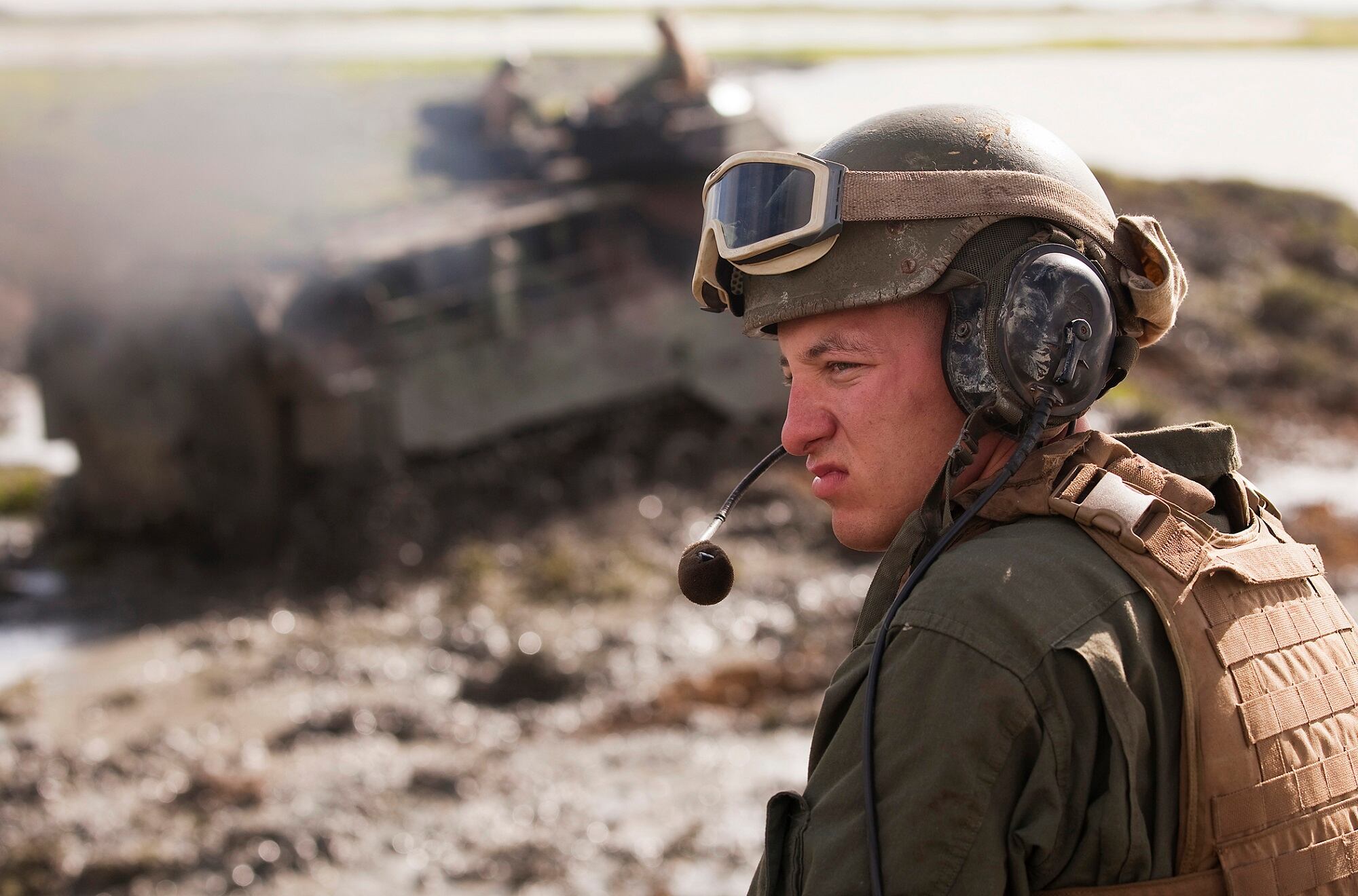ANNAPOLIS, Md. ― The demise of amphibious operations, especially the ships and connectors linked to those ops, have been touted by experts as not ‘survivable’ in recent years.
The Marine Corps isn’t having any of it.
“There’s a lot of talk about how we’ll never do amphibious ops again,” Maj. Gen. Tracy King, director of expeditionary warfare, said here on Oct. 23 at the National Defense Industrial Association’s Expeditionary Warfare Conference. “But we’re not talking about another Iwo Jima. We’re talking about distributed maritime operations … at a time and place of our choosing.”
RELATED

Responding to an audience question to counter the challenge that amphibious platforms are not survivable and perhaps not needed, King was emphatic.
“If that’s true, then why is every other actor in the Pacific building its amphibious capabilities today?” King said.
On a separate panel, think tank experts and retired Marine officers Mark Cancian, senior adviser at the Center for International and Strategic Studies, and Dakota Wood, senior research fellow with the Heritage Foundation, answered the question in their own ways.
“The perception that the amphib fleet is vulnerable has some merit,” Wood said.
Part of that, though, is defining what ‘survivable’ means and better conveying to Congress how these platforms are to be used.
Cancian noted that the naysayers confine their definition of amphibs to the littoral combat ships, and also dismiss the use of commercial ships for part of the larger operations.
And that has driven the move to smaller amphibs and having a mix of platforms at their disposal so that if some are unable to enter an area, others can.
That ignores that the LCS would rarely ever operate alone and that in some senses, a commercial ship is more survivable than some Navy ships used to deploy amphibious vehicles for beach landings.
“We have to shift from survivability of the platform to the relevance of the force to accomplish the military objective,” Wood said.
Those same questions can be asked of other formations and platforms.
“How survivable is a Marine Corps platoon storming a hill or conducting operations in a town?” Wood said. The better question is to ask whether the force is effective, and can that force take hits and still move to the objective.
Even the beloved Marine Expeditionary Unit, one of the smallest of the Marine Air Ground Task Force constructs with about 2,500 Marines, are built not necessarily to fight a war, but to support allies and provide a striking or blocking force for the Navy, King said.
The Amphibious Readiness Group and MEU are to support, not to fight.
Part of that will get a closer look as leaders, planners and thinkers evaluate current formations under the direction of Commandant Gen. David Berger.
That was initiated after Berger released the commandant’s planning guidance this past summer, realigning the Corps with the Navy to support sea control and denial.
Arthur Barber, chief analyst with Systems Planning and Analysis Inc., moderated a panel on future expeditionary warfare at the conference.
He pointed to the guidance as a call to look at the Amphibious Readiness Group’s current makeup and ask whether it still makes sense.
“What are the implications of Expeditionary Advanced Base Operations? How does unmanned play into this? What are the logistics needs?” Barber said.
In a previous talk, John Berry, retired Marine infantry officer who now is the director of the concepts branch at the Marine Corps Warfighting Lab, noted that the Marines have gained a reputation for being “all about bloody amphibious assault.”
But, he argued, that was only a brief period in the modern Marine Corps history. Berry pointed to Marine brigades conducting stability operations in the Caribbean while at the same time another Marine brigade was fighting it out in the Battle of Belleau Wood, France, during World War I.
Though the WWI episode rings in Marine Corps legend, those “stability operations” were used to counter the influence and positioning of a peer adversary — Germany, that the United States feared would constrict, control or attack the Panama Canal, a strategic chokepoint for supplies and trade.
During the Cold War, Marines specialized for a time in Arctic training, partnering with Norway and other countries in the North Atlantic to harass and control the Soviet Union’s northern flank. They were not expected to go toe-to-toe with the Russian Navy at sea.
And that is, in many ways, what’s being asked of the Marines today.
“Do we want to put 1,000 Marines and sailors on a $1.8 billion ship and throw them into a contested archipelago?” Berry said. “Probably not.”
Todd South has written about crime, courts, government and the military for multiple publications since 2004 and was named a 2014 Pulitzer finalist for a co-written project on witness intimidation. Todd is a Marine veteran of the Iraq War.




